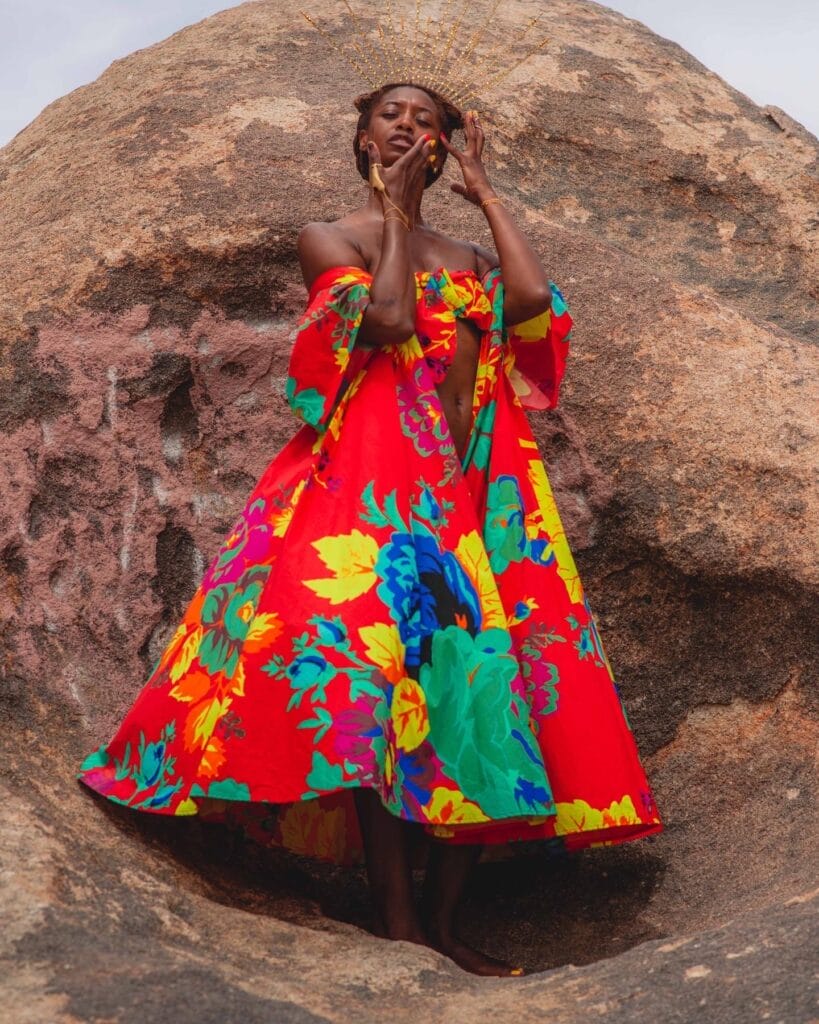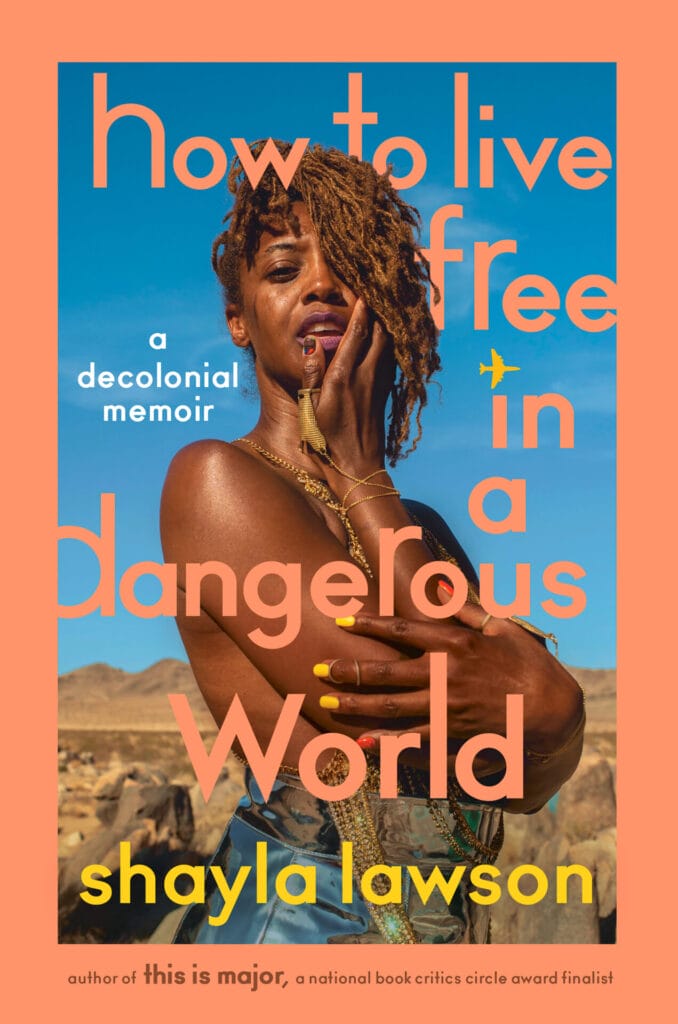Shayla Lawson, award-winning author, poet, and journalist, has given us works like this is major and I Think I’m Ready to See Frank Ocean, showcasing their poetic range and recently released a highly anticipated coming of age work of our time. Their newest book, How To Live Free in a Dangerous World: A Decolonial Memoir, on February 6, 2024. An inspiring must read focusing on life, love, gender, race, and disability and brings a rawness of intimacy that is felt with every page.
Each essay takes you on a close trip of Lawson’s life. From the being in their mother’s womb, to navigating a change in perspective on time and life once diagnosed with Ehlers-Danlos Syndrome, you’re in for a literal trip. We follow Lawson as they travel to a multitude of places like New York, the Netherlands, Venice, and Tokyo, just to name a few. And with each place, comes a direct tie to how they come to terms with letting go of something that held them back.
From the chapter “On Them,” where they learn from their own students on their own gender identity. To the chapters and “On Dying” and ” On Time” where they reflect and learn how time and life truly work alongside each other.
We caught up with Shayla Lawson to celebrate the debut of How to Live Free in a Dangerous World: A Decolonial Memoir. Check out what they had to say below:

GLAAD x Shayla Lawson
GLAAD: You’ve been an artist, a writer, a poet for much of your life. And your memoir itself has a poetic flow to it in each story of love, privilege, and finding your own identity and self. What would you say is what drew you to writing specifically as your main form of expression?
Lawson: Writing travels easily. but I wanted to be a fine artist. I used to travel around the world with a sketchpad and watercolors. I’d sit at Italian bridges in Venice, or on a Spanish rock cliff at Montserrat and paint but people would come up behind me to watch and realize I wasn’t very good. You know how they say ‘a picture’s worth a thousand words’? Since I’m a bad artist, I got really good at turning 1,000 words around.
GLAAD: We get to travel to all the places you’ve visited and lived in with you in your book chapter by chapter. From Kentucky to New York, the Netherlands, and so many spots in between. You described yourself as “a small town artist who really had no big city dreams. A girl who just wanted to live somewhere she could be understood.”(p. 153). What is something you’ve learned or advice you’d give your younger self, on finding that place for yourself?
Lawson: That I didn’t have to be ‘just a girl.’ That the only limit to how I was understood or who I might become was my anxiety over displeasing people and my imagination of their worst possible retaliation. That thinking of myself as someone who needed to fit in a comfortable box was the biggest obstacle I faced in my own self love. That I wasn’t a girl but rock star, and star dust, and god-flame in the making.
In that chapter, “Online,” I talk about how happy I am that us misfits can now find community through social media. I wouldn’t have been such a later bloomer to these truths if I knew the arrogance of the moral “majority” “isn’t real solidarity. It doesn’t travel well.”
GLAAD: The cover is an absolutely beautiful picture of you showcasing such a serene emotion, fitting for the book title. What is the story behind choosing that shot to be the official book cover?
Lawson: The photo’s important to me because it’s got some sass, some sex appeal, but it’s real story is that of representation and visibility. In it, a dark brown, glittery, nonbinary me—one hell of a queer, weird human, chronically ill, replete with frailties—traverses the earth half-naked. Unmolested and unbothered. The jewelry on my fingers are medical braces that protect my joints. An even tinier queer human is painted on my thumbnail repping their Frida Kahlo eyebrow. It’s my vision of freedom, how the world should feel for all of us walking across it—safe. And within it we should be filled with wonder and still feel important. This book is a HOW TO because a world in which we thrive is the world it aspires towards.

GLAAD: In your book, you eloquently discuss the complexities of identity and the limitations imposed by societal expectations and how this played a part in your journey to recognizing your identifying pronouns later in adulthood. Specifically in being black and trying to define and explore the term “womanhood.” How so?
Lawson: Blackness is nonbinary. The binary was created to keep people of color, people of spice and flavor, people with originality, on the outside of its boundaries. It took me until I was 40 to say “F’ you” to its limitations. I’m a Millennial. I had to wait for Gen Z to be my role model and blaze the trail. I think of the “they/them” in me as the “X” in Malcolm. A recognition that decolonization comes through a radical relearning of my heritage, and the ways that my cultural growth has been disrupted by countries that enslaved my ancestors. I am a proud black woman, but I’ve hit unsubscribe on “womanhood”— I unsubscribe from a value system that’s made generations of my kinfolk lesser because their own stale-ass vibes are off.
GLAAD: After now going through the full writing process and now it being the week of the book’s release, how does being able to create this level of storytelling for yourself feel?
Lawson: Like a compliment. I wrote this book as a survival guide for the road to revolution that lies ahead of us. Vulnerability as resistance. Rest as a political act. Self-preservation as community empowerment. Liberation in the form of love. Good storytellers make great activists. If you’ve been moved by storytelling, we can move the world next.
GLAAD: “Freedom is traveling but liberation is food.” (p. 204) Is honestly one of my favorite lines in the book and a powerful statement by itself. And there are stories where that freedom is felt, like in the chapter “On Dancer,” peppered throughout the book. What was the moment that really made you realize the difference between the two: “freedom” and “liberation”?
Lawson: That reminds me of one of my favorite quotes from the chapter “On Intimacy.” “It’s not that we need each other, we are each other.” Like Gwendolyn Brooks said, “we are each other’s harvest: we are each other’s business: we are each other’s magnitude and bond”; I keep a picture of her standing on her back porch among the neighborhood clotheslines hanging beside my bed. Throughout history, Black women have written their stories of breaking through colonial enslavement, blazing a path to their own freedom, so that they could liberate others. Freedom gives us the power to move, but liberation calls along our revolutionary comrades. It’s not traversing borders that feeds us, it’s building community.
You can purchase How To Live Free in A Dangerous World at Penguin Random House or Amazon!
And find Shayla Lawson and Tiny Reparations Books for more on their Instagram!













